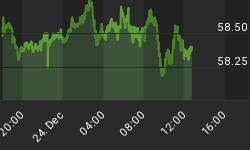CNBC EUROPE
LET'S LOOK AT THE FTSE 100 WEEKLY CHART FIRST

I have drawn the two highest probabilities I can see over the next two months. Remember the last retracement was held by 3/8 of the last major range and that does hold the uptrend intact. Unfortunately there could also be a bounce from that level even if the trend were down and down hard. The last correction exceeded in price any of the previous corrections but not yet in "time" so there is no confirmation of the bear trend. I believe the index is now building a secondary high. This means the index will now trade in a fairly narrow range for a period of time up to but not to exceed 90 calendar days and resume the move down. Or it will show the same pattern as the Nikkei has just shown or similar to the US 1946 pattern of trend and move to a marginal new high and fail. The former is the highest probability.
LET'S NOW LOOK AT THE DAILY CHART

You can see the little false break pattern for the low and the fast move up. If this is a secondary high then it should trade approximately between the lines I have drawn and run sometime between 30 and not to exceed 90 calendar days.
NOW LET'S TAKE A QUICK LOOK AT LONG TERM INTEREST RATES

Long-term interest rates vibrate to very long term cycles. Trends last between 24 and 35 years. There is data available from London going back to the 1600's. This chart represents long-term US rates showing the last cycle. The high in 1920 was followed by a move down in rates that lasted 26 years and was followed by a move up into the inflationary high in 1981 (remember that was 18%) and took almost 35 years. Since that peak in rates there has been a steady decline into 2003/2005 lows completing a 24-year bull move in long term-rates. You can see from 1946 it took over a decade before rates could start a significant trend back up. We can anticipate something quite similar. But this chart is a bit deceptive because of the 18% spike in rates that is on this chart during the 1980/1981 exhaustive advance. If there are any extremes in interest rates it will not occur for decades but we can anticipate interest costs possible doubling within the next seven to ten years and the up trend in rates to last at least 25 years. I feel confidant is saying there is now a 60-year cycle low to low in place and rates will advance for the next 25 years.
CNBC ASIA
LET'S FIRST LOOK AT THE WEEKLY CHART OF THE AUSTRALIAN ALL ORDINARIES INDEX

As with most stock indexes this market has just corrected more in price than anytime during the bull campaign but has not yet overbalanced or corrected more in "time," which would confirm the bear trend. The correction has held a previous low and 3/8 of the last major leg up, which appear to be holding the trend intact. I can only see two alternatives, either a marginal new high, which I consider the lesser of the two probabilities. This would look similar to the Nikkei pattern of trend at its high. Or a secondary high or lower high that will have a small distribution pattern and will not exceed 90 calendar days and is currently forming. The last secondary high in this index took 54 calendar-days, the index is currently at 25 calendar days from low. The form of a secondary high or lower high is usually easy to identify as they hold approximately 50% of that advance and thus don't do any significant downside testing of the low until the down trend resumes. In other words, the pattern tends to show a vertical move up as has occurred, followed by a sideways distribution and then a resumption of the downtrend.
















